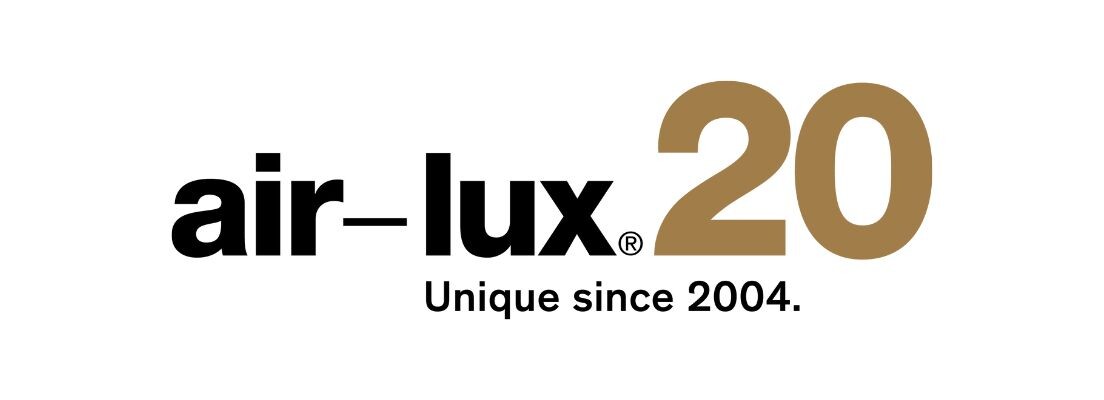Pivot doors from air-lux – top values in the tightness tests
With conventional window systems, opening variants with a lateral pivot point could never really establish themselves, as the pivoting sash, which moves in and out at the same time, could not be completely sealed. With the two air seals on both sides of the pivot point, air-lux pivot windows and doors are 100 % wind and driving rain tight. Independent tests – conducted by ift Rosenheim, among others – once again confirm the outstanding values.
The weak point of common pivot doors on the market is that the centrally mounted center of the stop seal causes a change in the direction of tightness. This change means that the values required of entrance doors cannot be achieved. However, air-lux Technik AG has set itself the goal of designing the pivot door in such a way that it is 100% leak-proof despite simultaneous opening to the outside and inside; regardless of where the door pivot point is located. The absolute tightness was achieved with the patented air sealing technology (https://www.air-lux.com/system/).
The outstanding empirical values in pivot doors with the air-lux air sealing system, which have already been installed many times, have now been proven once again in another tightness test:
A single-leaf pivot door made of aluminum-plastic composite profiles with a circumferential continuous seal and electric motor-driven locks was tested. In the tightness test, peak values far above the average were achieved outside the common standard classes.
Maximum value in terms of air tightness
In the first test with a pivot door in the dimensions 2000 x 3000 mm (W x H), the air permeability was
0.07m3/hm to 0.16m3/hm, which corresponds to the highest class 4.
corresponds. (1)
Best value in terms of driving rain tightness
Driving rain impermeability describes the ability of a building structure or seal to withstand rainwater in the event of driving rain. If wind is also involved, the so-called dynamic pressure additionally drives the rainwater through the seal, which is why the pressure is specified in pascals (Pa). With 750 Pa, the pivot door from air-lux also achieves the best value here according to EN 12208. From class 9A, doors and windows are sprayed with a test pressure of 600 Pa for 55 minutes in the test. (2)
Very good in wind tightness
In contrast to air tightness, wind tightness tests the wind sealing of a building, or how the building components are protected from air movement within the thermal insulation or how cold outside air enters the thermal insulation structure. Wind tightness is a key measured value, especially for energy-efficient buildings. In the test by IFT Rosenheim and at the Schüco Technology Center, the second-best value in the five-stage rating scale was achieved with class C4. (3)
Conclusion: The unique air-lux air sealing system is perfect for pivot windows and doors with lateral or central axis of rotation. Since air-lux does not use stop seals, air-lux pivot doors can be opened inward as well as outward. With the two air seals on both sides of the pivot, air-lux pivot windows and doors are 100% airtight and driving rain-proof. This means that air-lux pivot solutions can be used without any problems, even on facades exposed to heavy traffic and weathering. Pivot doors from air-lux: an exciting design element for discerning architects.
www.air-lux.ch
Footnotes
(1) Comparative values: Air permeability is divided into classes 1-4 (1=poor to 4=very good). Class 1: approx. 8m3/hm to 11m3/hm, Class 2: approx. 3m3/hm to 8m3/hm, Class 3: approx. 1m3/hm to 3 m3/hm, Class 4: better than 1m3/hm.
(2) Comparison values: 0 PA (not tested or 1A/1B), 50 Pa (2A/2B), 100 Pa (3A/3B), 150 Pa (4A/4B), 200 Pa (5A/AB), 250 PA (6A/B), 300 Pa (7A/B), 450 Pa (8A), 600 Pa (9A), over 600 Pa (E). In-house testing has already been done up to E1200 without a testing agency.
(3) Comparative values: Wind to A1 poor to C5 very good: A = 1/150, B = 1/200, C = 1/300 (3 climate classes). Wind pressure is also tested: 1 = 200 Pa, 2 = 400 Pa, 3 = 600 Pa, 4 = 800 Pa, 5 = 1000 Pa

